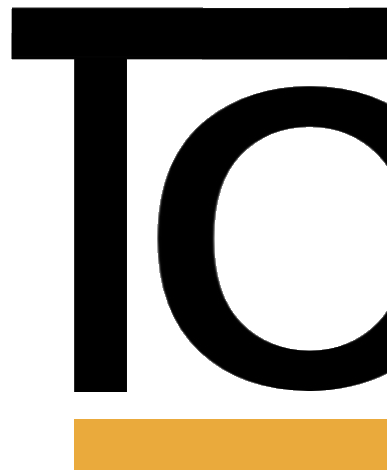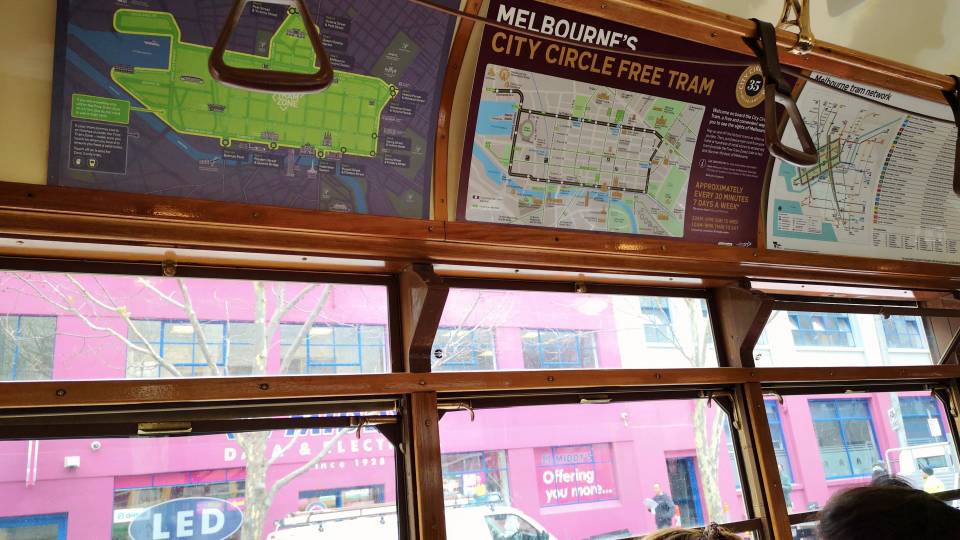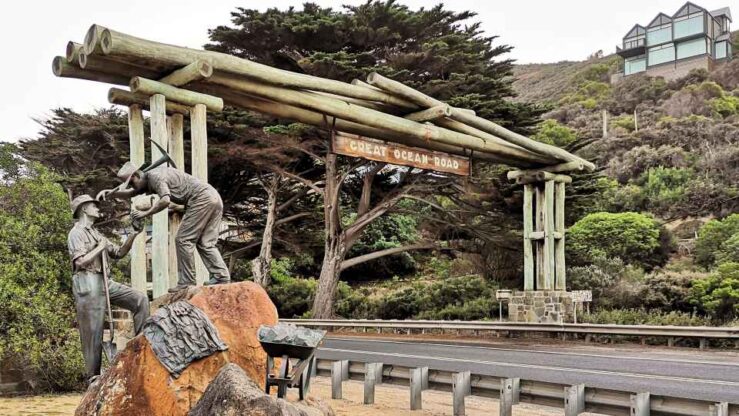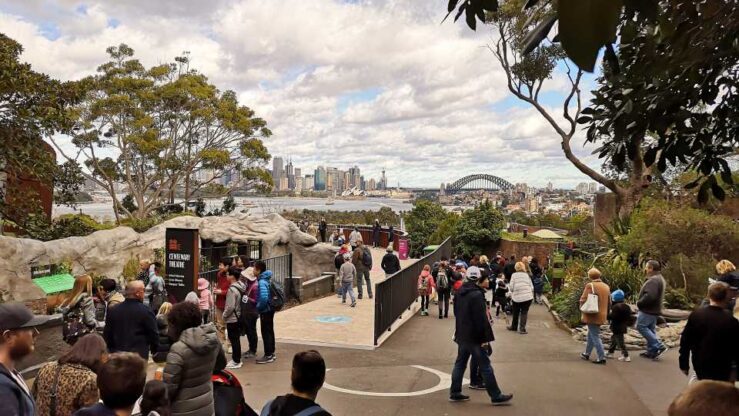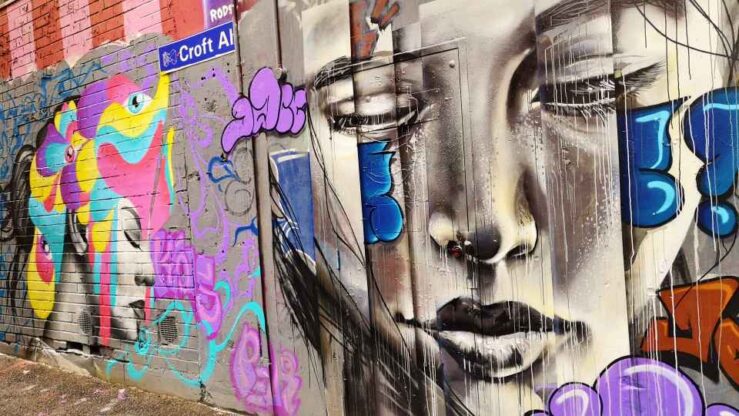15 Cool Things to Do in Melbourne – Victoria in 3 Days
Melbourne in Victoria is a multifaceted metropolis seething with top-class art and loads of cultural things to do with 3 days in the city. It is easy to be captivated by the innovative architecture at the Docklands and Melbourne’s narrow laneways flanked by striking street art murals. There are many gems to discover in the Victorian city: world-class museums, refreshing markets, prime restaurants and quirky bars with live music.
The city also hosts significant sports events and has several well-known sports arenas and the Flemington Racecourse for horse racing.
Based on our experience, we suggest a 3-day itinerary with things to do and explore in Melbourne and beyond – including a day trip to the southern coastal Victoria featuring the renowned Great Ocean Road.
DAY 1: 15 Cool Things to Do in Melbourne – Victoria
You will start your sightseeing with a tram tour around Melbourne CBD. The old Circle Line no. 35 is, with its iconic W-Class trams, a free and convenient way to see some of the main attractions in the city. You can decide whether to take the tourist tram clockwise or anticlockwise since it operates in both directions most of the day. With the opportunity to hop on and off, it is excellent for the Docklands, St Paul’s Cathedral, the Parliament House, the State Library of Victoria, and many more sites. It takes approximately 60 minutes to complete the loop, and then you must add the time you spend ‘hopping off’. It is tremendously popular: annually, 3 million passengers use this tram service!
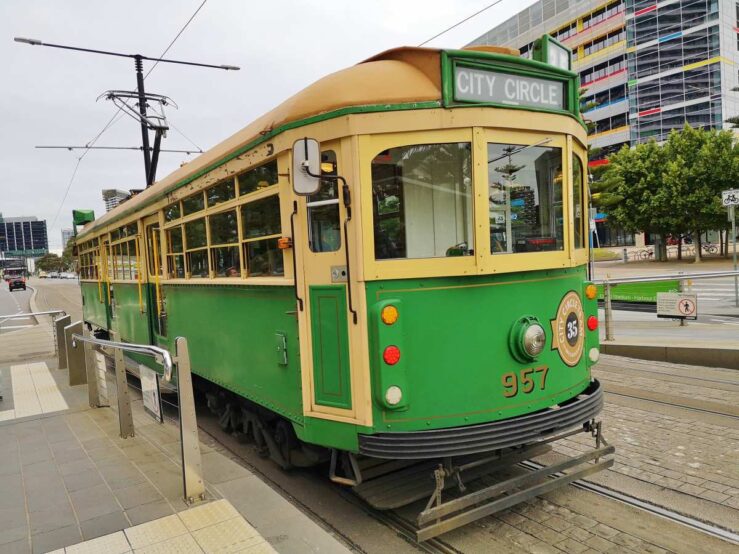
Photo: Travel In Culture
On this morning ride, we suggest that you, for instance, hop off to explore the following sites:
You will get off just in front of the Docklands Stadium, also known as the Marvel Stadium, after its sponsorship. It is a combined sports and entertainment stadium from the year 2000.
Right on the other side of the street, you will find yourself facing the Docklands and all the fascinating architecture surrounding the place.
After the gold rush period in the mid-1800s, there was a pronounced need for the development of Melbourne’s old port, and the West Melbourne Swamp was chosen as an optimal strategic location for this. That implied that the course of the Yarra River had to be widened here. The Docklands developed at this location from the 1880s onwards as Melbourne’s industrial dockland site with an extensive network of wharves and an efficient rail infrastructure.
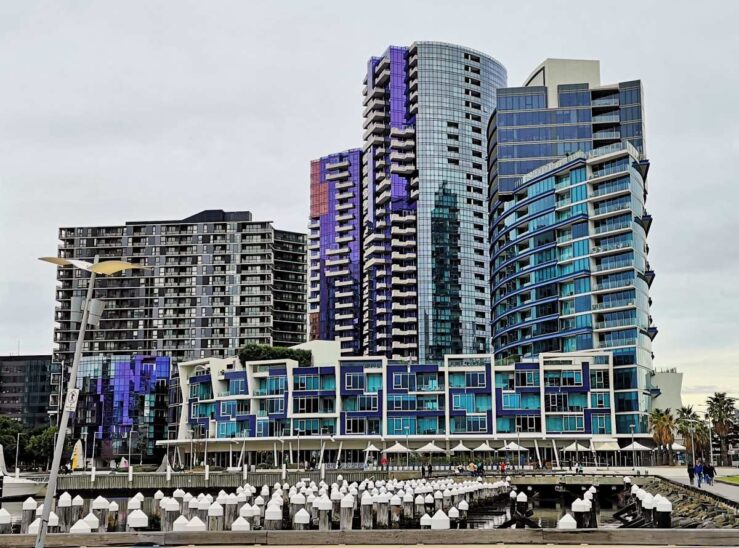
The Docklands | Photo: Travel In Culture
Towards the end of the 1900s, Victoria Dock comprised transport companies, shipping agents, and several cool and wool stores. The Dock handled up to 90% of all the imports!
However, this did not last, and the area needed redevelopment! In 1997, the authorities invited development bids – and it eventually resulted in transformations – changing the area’s character into what it is today.
You will see that the Docklands is no less than a fantastic urban open-air gallery! Walk along the iconic Central Pier featuring fascinating views of inspiring, modern architecture across the Docklands!
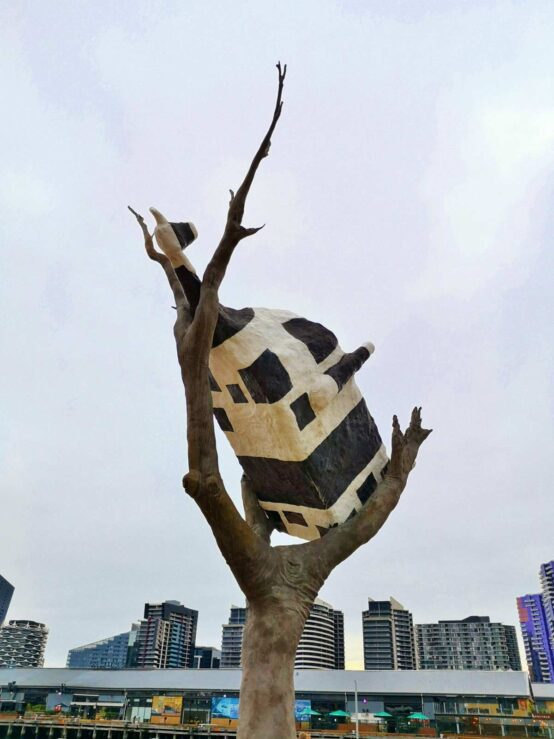
Cow Up a Tree by John Kelly | Photo: Travel In Culture
Jump on the tram again and continue to Flinders Street Station, designed by James Fawcett. The iconic station from 1909 (Federation/Edwardian Period 1902 – 1918) is a landmark and icon of Melbourne – located just opposite St Paul’s Cathedral. It features an art nouveau-style building with a dome, a tower and clocks, and an arched entrance.
Walk around and inside it to get all the details – and pay in particular attention to the clocks!
Flinders Street Station was the first urban railway station in Australia – and notably the world’s busiest passenger station in the 1920s.
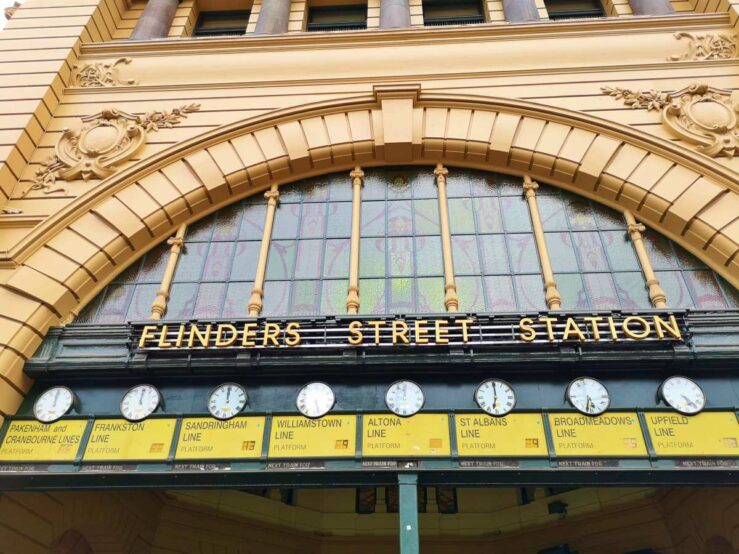
Flinders Street Station from 1909, designed by James Fawcett, is a landmark in Melbourne | Photo: Travel In Culture
Before lunch, you may also want to include a visit to the Immigration Museum – just opposite Flinders Street Station/Queens Bridge Station.
Melbourne has a diverse and multicultural population – it is among the ten cities in the world with the largest immigrant population. Nearly 40% of the population was not born in Australia! Ever since the indigenous Australians populated the place, people have more or less continuously immigrated to the city from a wide range of countries. Beginning with the colonists, the city has received immigrants from large parts of the world: English, Chinese, Irish, Italian, Indian, Greek …
The residents in Melbourne today come from about 200 countries and territories, and there is a pronounced diversity of languages and faiths (more than 200 languages and more than 100 religious faiths).
If you want to gain more insight into the diverse cultural backgrounds, visiting the Immigration Museum is really obvious. It tells from a personal point of view the story of some of the people and cultures that have immigrated to Victoria and influenced Melbourne – contributing to the city’s diversity today.
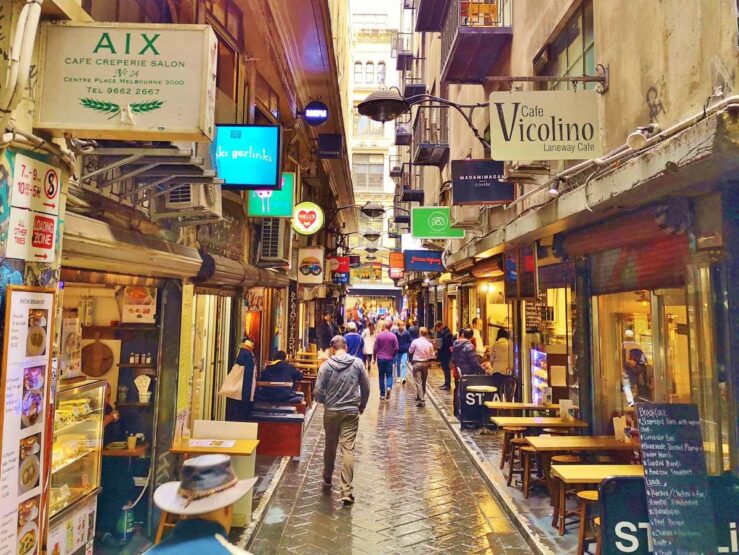
Photo: Travel In Culture
Explore the attractive Bourke Street Mall to get a taste of one of Melbourne’s best shopping areas. It is a vibrant precinct with many intriguing boutiques, department stores, cafés and eateries.
Look around – the Bourke Street Mall is also cherished for street performers!
You may, for instance, pass through the Centreway Arcade between Flinders Lane and Collins Street – a real gem! Since it is definitely lunchtime by now, you can look for a favourable lunch option here or in the neighbouring laneways! Do not deprive yourself of trying a cup of premier coffee in one of Melbourne’s quirky cafés – which the city is world-renowned for.
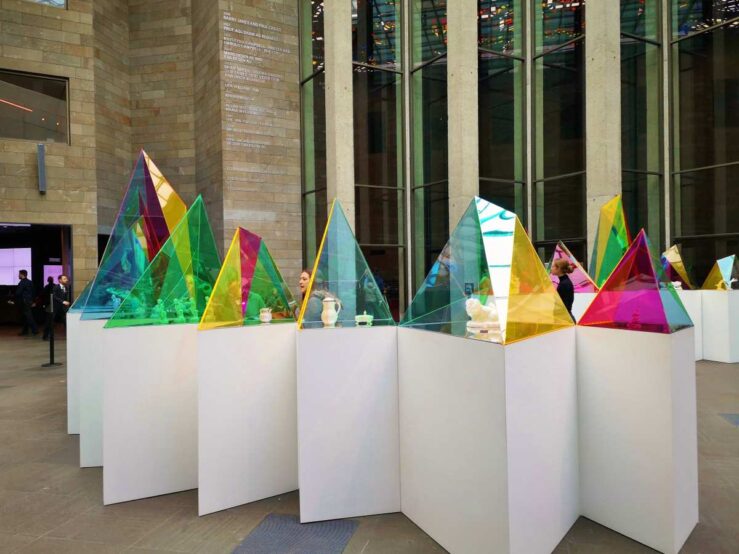
The National Gallery features impressive collections of 75,000 pieces of art | Photo: Travel In Culture
You will spend the afternoon in the outstanding National Gallery of Victoria on the other side of the Yarra River on St Kilda Road. Entry to the permanent collection is free!
The gallery building is one of the iconic buildings in Melbourne, dating back to 1968, with remarkable water art already at the entrance. A Water Trail has been established to show how water plays a role in life, history, and across cultures. Water conservation is significant, and when it rains, water is collected on the roof of the building. The Waterwall, recycling cascading water down the glass at the museum entrance, marks the beginning of the Water Trail.
There is A LOT to see here – so allow at least a couple of hours if you are an art lover!
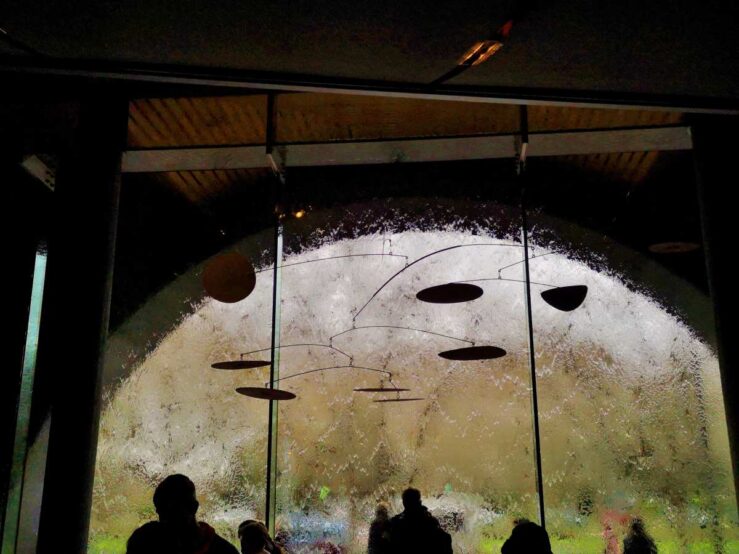
The Waterwall, recycling cascading water down the glass at the entrance of the National Gallery, marks the beginning of the Water Trail | Photo: Travel In Culture
After the museum visit, you will walk over to the Royal Botanic Gardens, founded in 1846 on the Yarra River southern bank. Today, it is a garden featuring more than 8,500 plant species from countries worldwide. Many climate zones are represented, with 30 living plant collections. In the Australian section, you can explore various landscapes such as bushland, wetlands, woodlands and heath. This city oasis draws nearly 2 million visitors annually!
The Royal Botanic Gardens Victoria is one of the sites in Melbourne where you will enjoy to chill for a few hours. It offers Free Guided Walks, an Aboriginal Heritage Walk, a Garden Explorer bus, and much more. Before coming, check out the website for the current activities!
Melbourne is also Australia’s sports-loving city. Next to the Botanic Gardens on the other side of the Yarra River, you will find Melbourne Park, home to Australian Open Tennis, Melbourne Arena, the National Tennis Centre, and Melbourne Cricket Ground.
In the evening, you will find yourself back in the bustling Melbourne CBD, where you will look for a tempting dinner place!
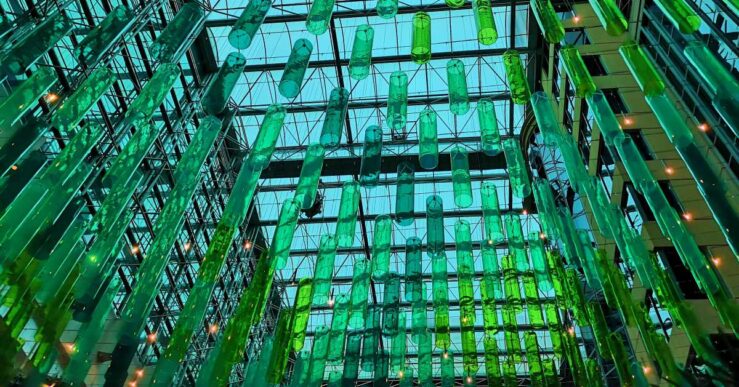
Photo: Travel In Culture
1-day itinerary for Magnetic Island
The Great Ocean Road
Road safety Australia/your country
DAY 2: 15 Cool Things to Do in Melbourne – Victoria
You will start your day at the old, traditional Queen Victoria Market from 1878. Check the website for closing days, opening hours and special events like night markets, festivals etc. The market is generally open five days a week: Tuesday, Thursday, Friday, Saturday and Sunday.
The Victoria Market in Melbourne, the Vic Market or Queen Vic, has existed for more than 140 years and is today the epitome and landmark of Melbourne. With its 600 small businesses, the Melbourne Victoria Market seethes with long-established traditions and refreshing things to try, eat and do.
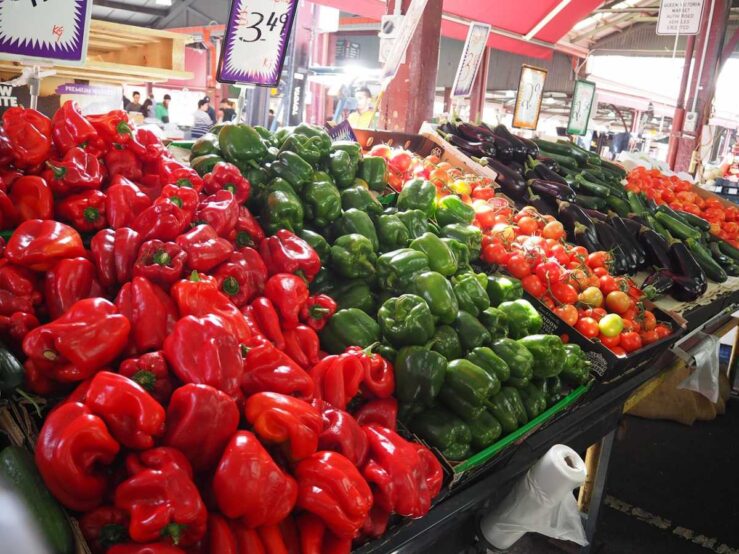
Queen Victoria Market, established in 1878, is still open five days a week | Photo: F Hocking / Pixabay
The place has a long and fascinating history. In 1837, the site was Melbourne’s first official cemetery, established by the early settlers. In 1846, it was converted into an official hay and corn market, replacing the centrally located hay market where St Paul’s Cathedral stands today. Later, it housed the fruit and vegetable market – and the livestock market, as well as other things. Since 1867, it has exclusively been a reserved marketplace – and Queen Vic was established!
In 2015, the Victoria Market had as one of the new things a number of worm farms installed to help reduce food waste and contribute to sustainability in Melbourne – do check it out while on the Market!
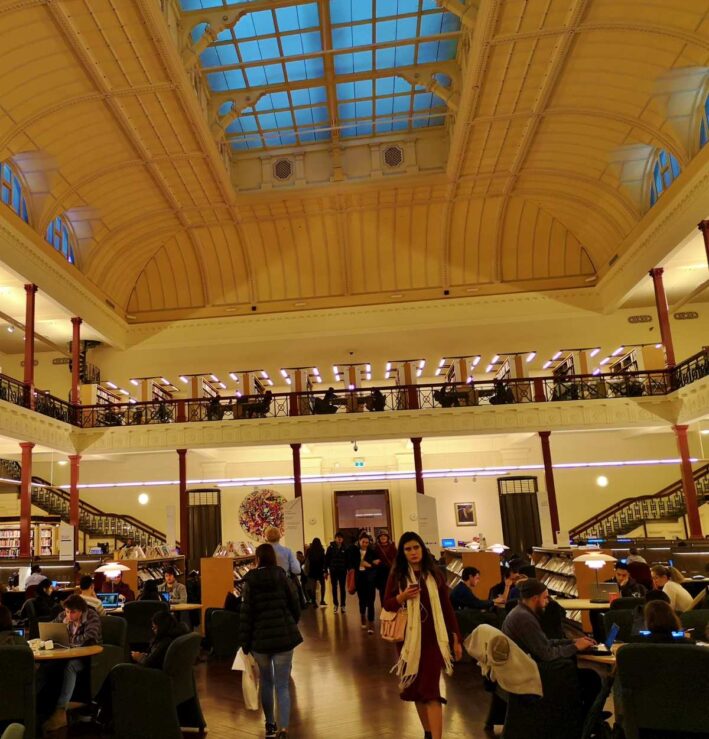
The iconic State Library Victoria is one of the oldest buildings in Melbourne | Photo: Travel In Culture
As a curiosity, you should pass by the State Library Victoria from 1854 – thus being one of the oldest buildings in the city. It is Australia’s oldest public library and one of the first free public libraries in the world.
When the State Library opened, it was considered the people’s university! It was also a heritage location, storing items of cultural and historical importance. Over the years, the library has continuously expanded, enlarging the site with new architecture and exhibitions.
For your visit, you may want to locate the octagonal room, the Quad, the Ian Potter Queen’s Hall, the Dome, and the Redmond Barry Reading Room.

Photo: Travel In Culture
Now continue your walk – it is time to find the famous street art scene in Melbourne CBD.
Check out the narrow lanes between Victoria Street and Flinders Street for whimsical street art. Work your way down from the State Library / Victoria Market. Guildford Lane, Drewery Lane, Union Lane, Caledonian Lane, Rutledge Lane, Hosier Lane, AC/DC Lane, Duckboard Place, Strachan Lane and Croft Alley are just some of the famous laneways where you can catch a glimpse of the spectacular graffiti-like street art that Melbourne CBD is so renowned for.
Today, it is considered one of Melbourne’s most cherished open-air galleries, with numerous street art tours taking visitors through the famous alleys and laneways. It is a heaven of urban art created by unconventional and talented mural artists!
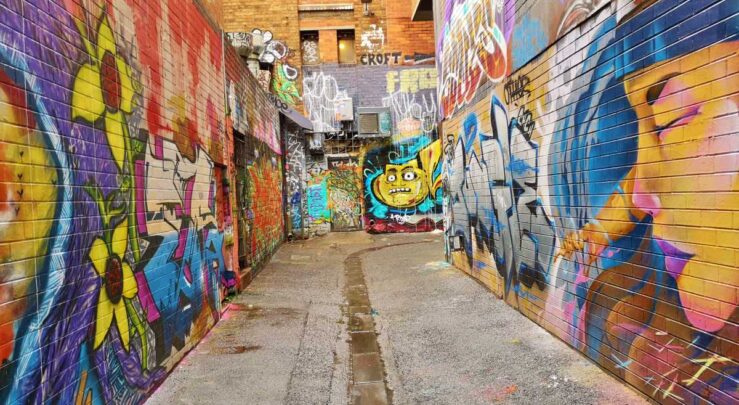
Photo: Travel In Culture
You are getting hungry, so why not stroll over to Melbourne’s Chinatown around the eastern end of Little Bourke Street – and try a Chinese lunch?
Chinatown was founded during the Victorian gold rush in the 1850s. It has a unique history since it is the most enduring Chinese settlement in Western countries and the oldest Chinatown in the Southern Hemisphere! In 1854, the first Chinese immigrants moved into Little Bourke Street. The Chinese worked as storekeepers and importers in the production and restaurant industry and as wholesale fruit and vegetable traders. In 1859, 8.5% of the population were Chinese immigrants, 45,000 people.
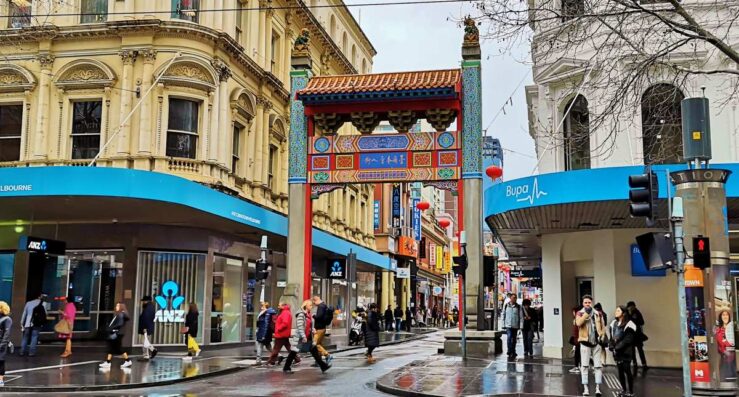
The oldest Chinatown in the Southern Hemisphere is the Chinatown in Melbourne, established in the 1850s during the gold rush | Photo: Travel In Culture
A few streets north of Chinatown, there is another iconic Melbourne building. It is the Old Melbourne Gaol. Check out visitor information on the website.
Its penal history goes back to 1842 when two Aboriginal Tasmanians were brutally hung here.
One of the legends related to Old Melbourne Gaol was the bushranger Ned Kelly, who was hanged here in 1880. He was accused of being a bank robber, a horse thief and a murderer. After later being dug up at the Gaol Cemetery, his skull was presumably kept at the Gaol for many years before it was stolen in 1978. It appeared again in 2009. There was, though, through DNA tests, evidence that the skull was not Ned Kelly’s skull! Anyway, Kelly is still in the Australians’ consciousness. Over time, he has even got a legendary hero status in Australia!
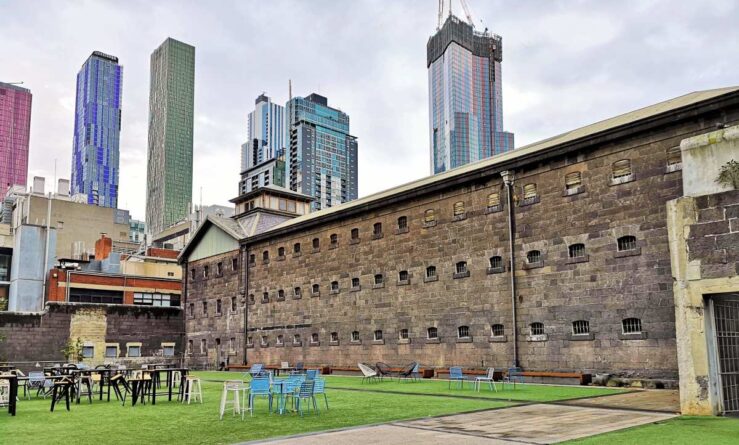
The bushranger Ned Kelly was hanged at the Old Melbourne Gaol in 1880 | Photo: Travel In Culture
In 1909, the City Watch House opened next to the Gaol as a place for criminals before the court, whether for minor or more severe misdemeanours. It was a place where the Melbourne Police could safely lock up the offenders for a shorter time. Lots of drunkards, criminals and gangsters have spent some time here! The City Watch House was finally closed as late as 1994.
After visiting Old Melbourne Gaol, you may now opt to squeeze in a visit to the South Melbourne Market (check if it is open today) – or, alternatively, go directly to St Kilda if you would like to spend more time there and do other than viewing the penguins!
Otherwise, if you prefer to go, include the South Melbourne Market. Take a tram from Melbourne Central Station or Flinders Station to the Market. To continue to St Kilda later, you will continue by tram from the South Melbourne Market (search on the same website as above to see the connection).
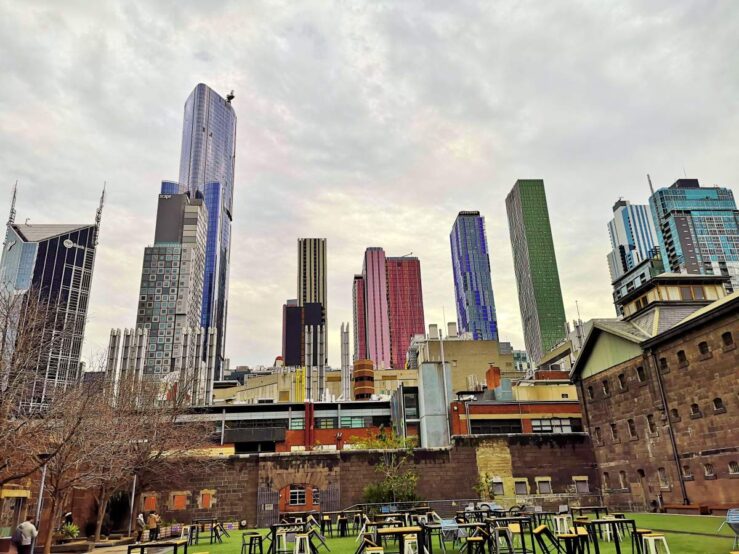
Photo: Travel In Culture
The South Melbourne Market was established in 1867 and is Melbourne’s oldest general market. In 1904, the South Melbourne Council took control of the trading place.
Gradually, over the years, the market has been modernised, beginning with electric lights in 1924.
It is now an enticing place with everything you can think of, including fruits, vegetables, meat, grocery, fashion, flowers, books, events … – and has a great vibe!
Today, you will only have time to get a taste of the market. However, the Mussel Festival, Night Market, cooking classes and tours are all events and activities you can consider if you have more days in Melbourne and happen to be there at the right time! Check out the South Melbourne Market website for more info and for opening hours. Generally, the Market is open on Wednesdays, Fridays, Saturdays and Sundays.
Afterwards, hop on the tram again for a unique experience at St Kilda Pier.
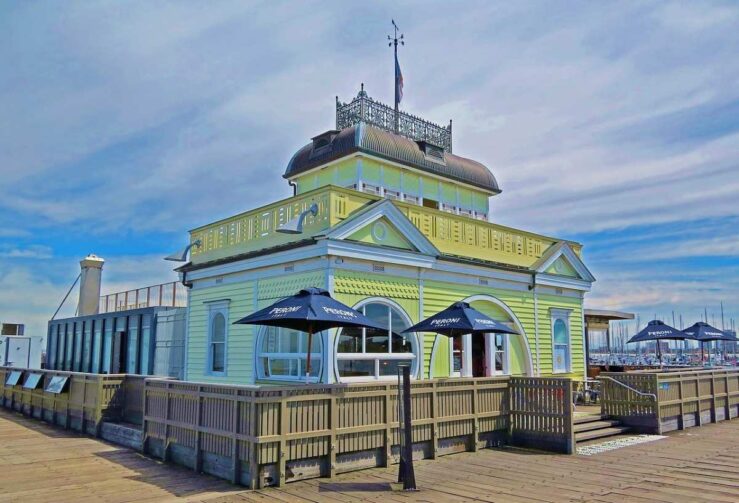
The iconic St Kilda Pier is the place to see small penguins coming in from the ocean at sunset | Photo: Scozzy / Pixabay
You will definitely want to be here in Melbourne’s beachside suburb by the end of the afternoon – well before dusk. The stunning St Kilda Pier from 1853 is a landmark and the place in Melbourne where you can see tiny penguins waddling in from the ocean just around sunset. It is exceptional! They spend the night in their nests between the rocks and set out into the sea again in the morning at sunrise.
To catch a glimpse of the penguins, make sure you are on the pier before dusk! Check out the sunrise and sunset times in Melbourne. Notice that you are not allowed to use flash when taking photos!
St Kilda Beach is also a favoured place on a nice sunny day!
You will easily find a restaurant at St Kilda for dinner – and you may even feel tempted to enter the enticing Luna Park afterwards. It is a theme park from 1912 that has the oldest continuously operating roller coaster worldwide.
After completing all of today’s activities, you will definitely sleep well tonight!
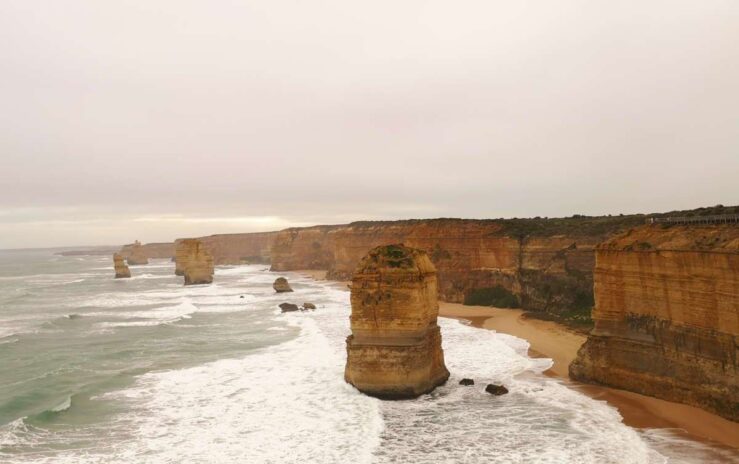
Today, there are only seven of the iconic Twelve Apostles left. A must-see when you drive on the Great Ocean Road | Photo: Travel In Culture
DAY 3: 15 Cool Things
No visit to Melbourne and Victoria is complete without including a day trip to the Great Ocean Road – with numerous things to do along the road.
If you look around to compare the tours offered by different tour operators, you can probably find an option which includes quite a few stops on the way to the iconic main attraction, the Twelve Apostles. With some luck, you may find a tour which both provides you with the opportunity to spot some native wildlife like kangaroos, koalas and platypuses along the way and which passes through small picturesque coastal towns. Other highlights could be the Memorial Arch, the rainforest and the Loch Ard Gorge.
For a more detailed description of what to see along the Great Ocean Road on a day trip, you may read: Exploring The Great Ocean Road Australia – G’day Mate!
You will probably have to get up very early! It will most likely be a long day – but it is totally worth it!
Read more about Australia: 10-Day Itinerary in Queensland
Read next
Discover Aboriginal Art in the Blue Mountains Australia and Exploring Daintree Rainforest
Find useful travel gear: Travel Essentials
Travel Insurance / Visa
Have you considered what you will do in the (unlikely) event of something unforeseen happening? Do you need travel insurance? Check here if you need travel insurance for your trip – and check here if you need a visa for your trip and apply for it!
15 Cool Things to Do in Melbourne Victoria in 3 Days
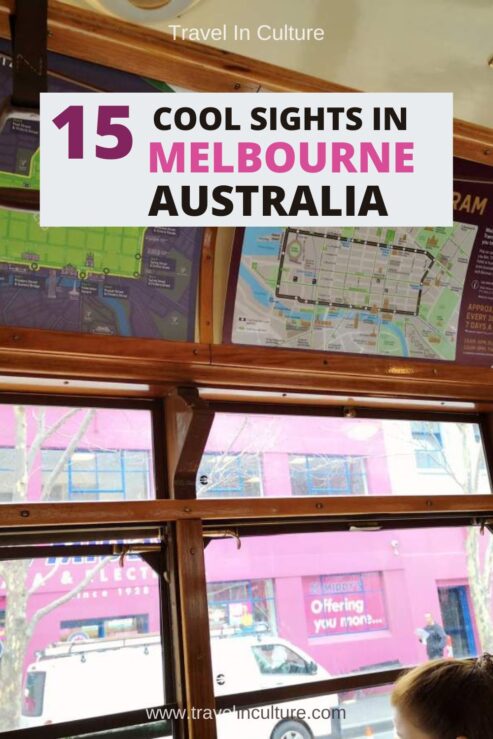
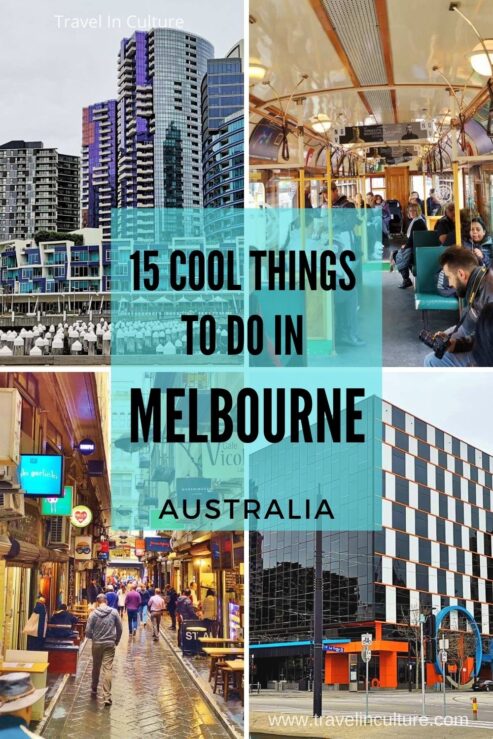
Featured image of
15 Cool Things to Do in Melbourne Victoria in 3 Days:
Travel In Culture
Things to do in Melbourne, Victoria – 3 days in Melbourne
